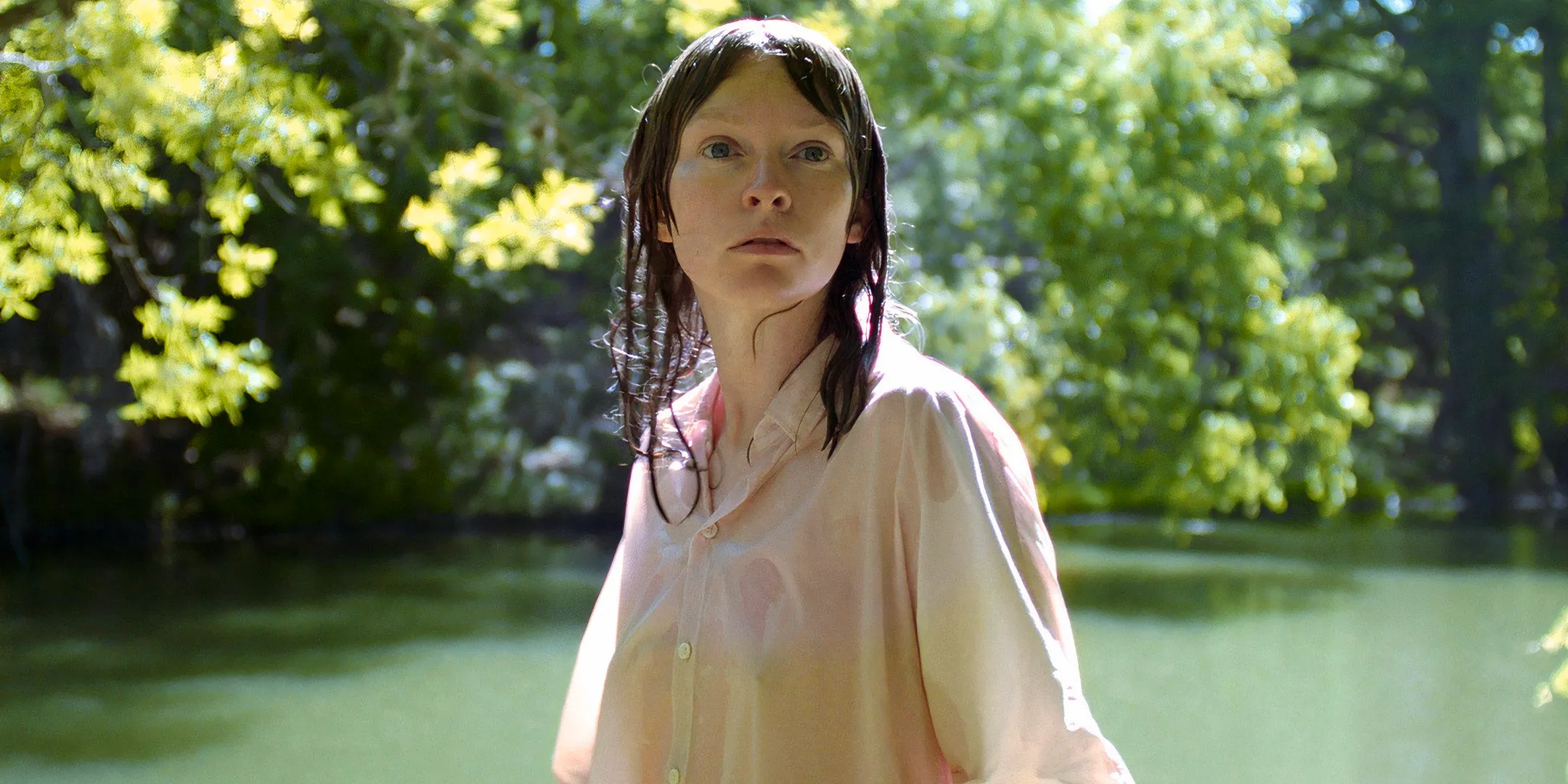Family Portrait's Atmosphere Is A Fresh Twist On Its Concept
Dysfunctional Family dynamics are one of the most explored in all forms of fiction, but particularly in film and TV. We've seen a plethora of storytellers offer their own takes on the concept, including the Thrombey family in Knives Out, the Wang family in Everything Everywhere All at Once, or the Altman family in This is Where I Leave You.
With Family Portrait, Lucy Kerr offers a uniquely different approach to the genre by setting it in a surreal and unpredictable environment. The tension of conflicting ideals between family members is felt with everything from minor looks to lines of dialogue, though this simmering frustration never builds into an explosion of emotions, keeping us intrigued about whether it will ever happen, or if they will do as many families do in real life and simply keep quiet.
Kerr's Direction Is Visually Superb & Auditorily Intriguing
In addition to the movie's overall pacing and structure, Kerr's approach to the soundscape of Family Portrait is an intriguing delve into the more surreal elements of the film. Beginning with entirely no sound before slowly fading in the chaotic crosstalk of a family gathering to take a picture, Kerr quickly establishes that the visual language of the movie will be just as, if not more, important than the actual dialogue, immediately immersing us in this off-kilter world she's creating.
The actual direction itself, which is also a credit to cinematographer Lidia Nikonova, is an absolute feast of natural lighting and practical locations. While some may expect a movie boasting a surreal Atmosphere to deliver otherworldly color palettes and unnerving imagery, Kerry and Nikonova keep things grounded, even amid the more Time-Bending moments and bizarre sequences, including a young boy hiding in a crevice of a large tree for no apparent reason. The decision to also keep the camera at a distance feels reminiscent of the eponymous artwork, inviting us to interpret what we will from what we're seeing.
A Lack Of Character & Story Development Keeps Family Portrait From Being Complete
Despite its atmosphere proving gripping, the biggest setback facing Family Portrait is the lack of any major development for its characters and plot. Not offering any major answers to the questions posed in a story is certainly par for the course in any surrealist project; Lynchian movies, in particular, are better known for how they keep us in the dark on what we experienced. Whether this was Kerr's ultimate intention for the film or not is unclear, but the ultimate lack of evolution on these fronts is frustrating.
Beyond Katy, Olek and the former's mom, many of the characters in the family feel largely underdeveloped, and as such feel inconsequential in the few events that unfold over the course of the movie. Brief mentions are seemingly made of prior sibling skirmishes, disagreements about their mother's mental state and Katy's potential pregnancy, but are as quickly forgotten as they are initially stated. Katy being our focal point into this family indicates these minimal developments are tied to how she views the topics, but it's still underwhelming from a storytelling standpoint.
Family Portrait's Narrative: A Shifting Focus From Family To Self
Family Portrait revolves around Katy, who travels with her boyfriend Olek to her family's sprawling property in the woods to take numerous holiday photos together. The film is set at the beginning of the COVID-19 pandemic, and they want to have as many ready as possible before having to separate from each other. But when Katy's mother disappears, and she and Olek become concerned about traveling to where they need to, the story becomes a mysterious and Time-Bending journey.
The sudden disappearance of Katy's mother would normally turn into a story in and of itself, or lead to an unraveling of the rest of the family, as recently seen in Apples Never Fall. Instead, Kerr elects to keep the focus on Katy and how she grapples with the anxiety of the situation. This nicely transitions into the more mind-bending sections of the movie, as we feel just as lost by what's happening as Katy.
Ultimately A Proof of Concept
Given the movie only has a 78-minute runtime, some of these frustrations feel like they could have been smoothed out by expanding Family Portrait into a more traditional 90-minute-or-longer movie. Though Kerr's dedication to surrealism would likely still have offered few answers, it could have at least prevented the film from being trapped between being a stylish proof-of-concept short and a fully fleshed out feature.
Family Portrait is now playing in theaters, and will expand to streaming via Metrograph at Home on Friday, July 5. The movie is currently unrated. Initially presenting itself as a realistic portrayal of a family on an idle but hectic summer day, the film progressively descends into a realm where time and space lose their grip, transforming the family portrait into a solemn and enigmatic ritual of transition.



